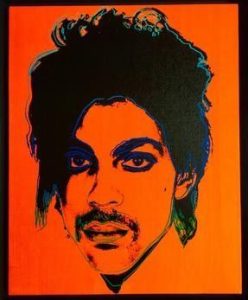The U.S. Supreme Court has ruled that Andy Warhol‘s orange silkscreen portrait of musician Prince, adapted from a photograph by Lynn Goldsmith, does not qualify as “fair use” under copyright law. The court’s decision has significant implications for artists and content creators, as it raises questions about the transformative nature of derivative works.
 In a 7-2 majority opinion authored by Justice Sotomayor, the court found that both Warhol’s artwork and Goldsmith’s original photograph served the same purpose of depicting Prince in magazine stories about him. The commercial nature of the copying further weighed against fair use. The decision has sparked concerns about potential copyright infringement lawsuits and may lead to more caution among artists using existing works as inspiration.
In a 7-2 majority opinion authored by Justice Sotomayor, the court found that both Warhol’s artwork and Goldsmith’s original photograph served the same purpose of depicting Prince in magazine stories about him. The commercial nature of the copying further weighed against fair use. The decision has sparked concerns about potential copyright infringement lawsuits and may lead to more caution among artists using existing works as inspiration.
Justice Kagan, in her dissent joined by Chief Justice Roberts, criticized the court’s shift away from transformative use, arguing that it undermines copyright’s purpose of fostering creativity and promoting progress. She contended that the majority’s interpretation restricts fair use boundaries and fails to consider the amount of new expression, meaning, or message added to a work.
The dissent also pointed out that the majority opinion improperly transplants the effect on the potential market factor into the purpose and character of use factor. Justice Sotomayor’s majority opinion, on the other hand, extensively criticized and rebutted Justice Kagan’s dissent, highlighting what it considered to be flawed logic and mistakes in the dissenting opinion.
Justice Gorsuch, in a concurring opinion joined by Justice Jackson, emphasized that judges should focus on the purpose and character of the use rather than speculate about an artist’s intention or assess the aesthetic character of resulting works. He noted that the majority opinion did not address whether the Warhol Foundation‘s licensing of the artwork infringed Goldsmith’s copyright or whether the artwork could qualify as fair use in other contexts.
Overall, the court’s ruling has created uncertainty regarding the boundaries of fair use and the transformative nature of derivative works. The decision highlights the need for a careful analysis of the purpose and character of a work when determining fair use, and it raises questions about the impact on creativity and the potential limitations on artists using existing materials to create new works.
 Indiana Intellectual Property Law News
Indiana Intellectual Property Law News

